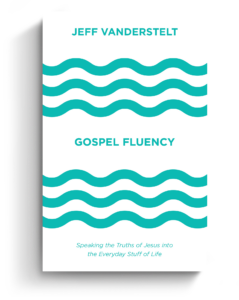How do I know if I’m experiencing true repentance over my sin or if I just regret the consequences?
It’s a familiar question for this pastor, and one I know from experience. Regret so easily masquerades as repentance. Both carry similar initial postures, but confusing them can be devastating.
Regret and repentance are readily mixed up because they often begin in the same spot––pain. To distinguish between the two, it’s helpful to compare Simon Peter and Judas, two disciples with vastly differing responses to having failed Jesus.
Two men. Two failures. Two paths––one leading to transformation and fresh faith, the other leading to despair and death. What made the difference?
Peter and Judas
When Peter disowned Jesus—even after declaring himself incapable—his willful heart choices caused regret (Luke 22:33, 57). We see similar regret with Judas, who realized he betrayed innocent blood and sought to rectify it with particular actions. It seems one difference, then, was whether or not they believed they could be forgiven.
Scripture reports that Peter wept bitterly at his betrayal, deeply grieved and distressed over his sin (Luke 22:62). And yet, by God’s grace, the Spirit turned him to hope (John 21:15–19). His surrender was so all-encompassing that he was able to believe his error was not fatal; in fact, it was redeemable. In contrast, when Judas cast down the 30 pieces of silver and was met with indifference, he had no hope that he could be forgiven, and committed an act of final despair (Matt. 27:3).
Both men essentially asked the same question, How could God possibly forgive me for my sin against Jesus?
Regret so easily masquerades as repentance.
We’re asking that, too. So how can we distinguish between prideful frustration or arrogant self-loathing at having given in to sin, versus a permitted sorrow intended to woo us to God? How do we know we’re moving toward transformation and hope rather than toward despair? And how does Jesus help us answer that question?
Pain Points the Way
When we choose to act misaligned with the gospel, a common firstfruit is embarrassment or self-condemnation. This pain often puts us on the path to shame, and that shame becomes either an end in itself or a means to an end.
Godly grief has its place—but for a believer, grief over sin can never be a destination; rather, it’s a tunnel through the mountain. We don’t stay there; we cast our guilt on Jesus because he asks for it and promises to deal with it once and forever (John 3:17; Heb. 12:2; 1 John 2:1).
When traveling, no one wants to stay in a tunnel. But the darkness there can make the beauty of the vista on the far side sweeter.
Path Splits
Peter’s response after succumbing to sin is brokenness and humility. Judas’s response is embarrassment at his weakness, as well as unbelief in God’s willingness or ability to forgive and redeem. How tragically ironic that Judas betrayed the One who actually came for betrayers, the One in whom the betrayal was forgivable. Judas didn’t seem to have any other paradigm than hoping in his own righteousness, standing on his own record. Once he lost his record, he felt he had nowhere to stand. And so Judas chose to never face another day.
For a believer, grief over sin can never be a destination; rather, it’s a tunnel through the mountain.
We all arrive at this choice: the rooster crows, and we’re revealed as broken sinners yet again. Depending on personality, circumstances, and how well we’re resting in Christ’s finished work, our knee-jerk reaction may be guilt and shame all over again. But instead we hope to make the choice of Peter—to allow sin to break our heart but not our faith.
As we move further into the gospel of grace, the noise of the rooster’s crow will sound less like a squawk of failure and more like a song of mercy.
Repentance Leads to Life
Repentance says, “I want to stand on Christ’s record of righteousness and not my own.” It trusts that your failures, no matter the extent, are not fatal—and that the only failure ultimately is to not surrender your fears, guilt, shame, sorrow, and sin to the love and goodness of Jesus.
Repentance is not what especially bad Christians do; repentance is the normal Christian life.
Repentance is not what especially bad Christians do; repentance is the normal Christian life. It’s acknowledging that God expects us to sin more than we expect ourselves to sin. Our proper response to the knowledge he already has is to swallow our pride and once again be reminded that we aren’t him. Only he is God; we are a broken and deeply loved people before him.
Repentance doesn’t ultimately fix us. It’s simply how broken people, with broken lives, inhabit a broken world until Christ takes us home––all the while experiencing substantial healing and transformation from the God who longs to be in relationship with us. And there’s not a thing to regret about that.
“The Most Practical and Engaging Book on Christian Living Apart from the Bible”
 “If you’re going to read just one book on Christian living and how the gospel can be applied in your life, let this be your book.”—Elisa dos Santos, Amazon reviewer.
“If you’re going to read just one book on Christian living and how the gospel can be applied in your life, let this be your book.”—Elisa dos Santos, Amazon reviewer.
In this book, seasoned church planter Jeff Vanderstelt argues that you need to become “gospel fluent”—to think about your life through the truth of the gospel and rehearse it to yourself and others.
We’re delighted to offer the Gospel Fluency: Speaking the Truths of Jesus into the Everyday Stuff of Life ebook (Crossway) to you for FREE today. Click this link to get instant access to a resource that will help you apply the gospel more confidently to every area of your life.




























